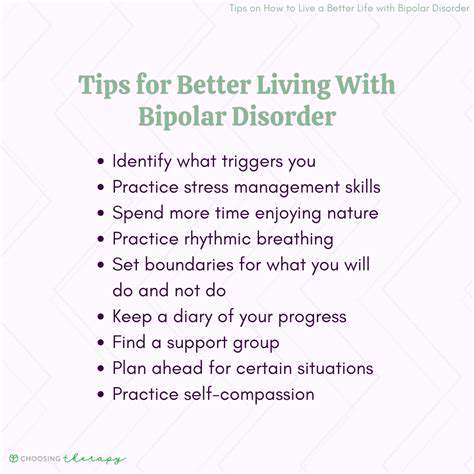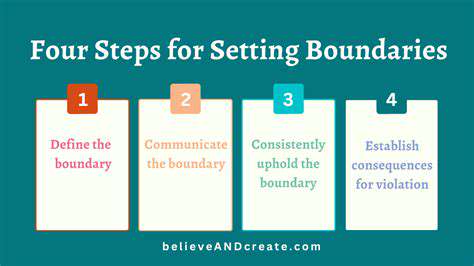Guide to Developing a Positive Mindset
Identifying and Challenging Negative Thought Patterns
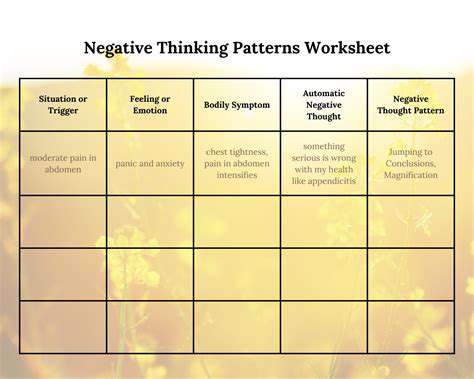
Identifying Negative Thought Patterns
Recognizing negative thought patterns plays a vital role in building emotional resilience and cultivating a healthier mindset. These repetitive negative thoughts often appear as self-criticism, catastrophic thinking, or persistent pessimism. The journey to recognizing these patterns demands honest self-reflection and heightened awareness of one's internal dialogue. By carefully observing recurring themes in our thoughts, we can begin to understand how certain beliefs contribute to negative emotional states.
Many of these unhelpful thought patterns develop from childhood experiences, cultural influences, or habitual ways of processing information. Discovering the roots of pessimistic thinking allows us to create targeted approaches for transformation. Effective methods for this exploration include keeping a thought journal, practicing mindfulness meditation, and discussing concerns with supportive friends or professionals.
Examining the Accuracy of Negative Thoughts
After recognizing negative thought patterns, the crucial next step involves questioning their truthfulness. Consider whether these thoughts reflect reality or represent exaggerated fears. What alternative explanations might exist for the situation? Gather evidence both supporting and contradicting the negative perspective. Frequently, these thoughts stem from cognitive distortions rather than objective facts.
For instance, when thinking I'll never succeed in my career, examine the factual basis for this belief. Have you received consistent negative feedback? Are there examples of professional accomplishments? Or is this belief driven by temporary setbacks? This evidence-based approach often reveals the exaggerated nature of pessimistic thinking.
Cultivating Balanced Perspectives
Developing more accurate viewpoints requires moving away from absolute negative statements toward nuanced understanding. Evaluate all possible outcomes realistically, considering both positive and negative possibilities with appropriate weight. This cognitive shift from catastrophic predictions to measured assessments takes practice but yields significant emotional benefits.
Instead of thinking This relationship is doomed, consider the actual challenges and strengths present. Focus on constructive actions that could improve the situation while acknowledging both positive aspects and areas needing work. This balanced approach fosters emotional stability and more effective problem-solving.
Nurturing Self-Kindness and Personal Wellbeing
Practicing self-compassion represents a powerful antidote to negative thinking patterns. During difficult moments, offer yourself the same understanding and support you would extend to a dear friend. Recognize emotional experiences without harsh judgment, creating space for healing and growth.
Regular self-care practices significantly contribute to emotional resilience and positive outlook. Activities like enjoyable hobbies, proper rest, nutritious meals, and physical movement all support mental health. Remember that caring for yourself enables you to better engage with life's challenges and opportunities.
Exploring Root Causes and Seeking Support
Persistent negative thoughts sometimes indicate deeper concerns like self-worth issues or mood disorders. Professional guidance from therapists or counselors can provide valuable insights and coping strategies for lasting change. Therapeutic approaches help uncover the origins of negative thinking while developing practical tools for management.
Through counseling, individuals can examine life experiences that shaped their thought patterns, learn effective stress management techniques, and build healthier self-perceptions. This comprehensive approach addresses both symptoms and underlying causes of pessimistic thinking.
Establishing Healthy Coping Strategies
Developing constructive ways to handle challenging emotions is essential for long-term wellbeing. Effective approaches include mindfulness practices, positive self-talk, and engaging in meaningful activities. Creating a network of supportive relationships provides encouragement and perspective during difficult periods.
Practicing gratitude by acknowledging positive aspects of life, celebrating personal achievements, and focusing on growth opportunities can gradually shift overall perspective. These strategies require consistent application but ultimately foster greater emotional resilience and life satisfaction.
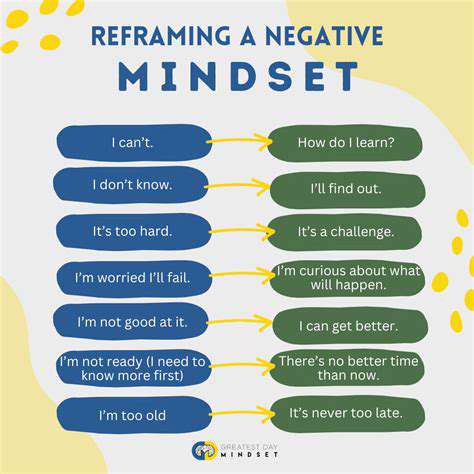
Building Resilience and Adaptability
Developing Inner Resources
Cultivating resilience involves developing the capacity to recover from difficulties while maintaining core stability. This process recognizes that challenges are inevitable, yet how we respond determines their impact. Resilience grows through intentional practice, self-understanding, and developing healthy coping mechanisms. Key aspects include recognizing emotional patterns, identifying personal triggers, and establishing constructive responses.
Adopting a growth mindset significantly enhances resilience. This perspective views abilities as developable through effort and sees challenges as opportunities for learning. Unlike fixed mindset thinking which avoids difficulties, the growth approach embraces obstacles as pathways to personal development. This orientation fosters greater adaptability and persistence through life's inevitable ups and downs.
Adjusting to Life's Changes
In our rapidly evolving world, adaptability has become increasingly valuable. This skill involves flexibility in thinking, willingness to consider alternatives, and comfort with uncertainty. Adaptable individuals recognize that perfect predictability is impossible and remain open to adjusting plans as circumstances change.
Continuous learning represents another crucial aspect of adaptability. Maintaining curiosity and willingness to acquire new knowledge prepares us for inevitable changes in technology, work environments, and social contexts. Seeking novel experiences and stepping beyond comfort zones builds the mental flexibility needed to navigate life's complexities.
Effective communication skills further support adaptability. The ability to express needs clearly, listen actively, and find common ground across diverse perspectives enables smoother navigation of changing circumstances. These interpersonal skills prove invaluable when adjusting to new environments, collaborating with different personalities, or managing conflicts constructively.
Practicing Gratitude and Mindfulness

Developing Appreciation
Cultivating gratitude involves consciously noticing and valuing life's positive aspects, both large and small. This practice doesn't ignore difficulties but creates balance by also acknowledging what's working well. Regular reflection on blessings, whether through journaling or quiet contemplation, can gradually transform overall outlook. Simple practices like appreciating nature's beauty or expressing thanks to others accumulate to create meaningful shifts in perspective.
Keeping a gratitude journal where you record several appreciations daily has demonstrated benefits for mental health. Other approaches include sharing appreciations during meals or taking moments throughout the day to mentally note positive experiences. These practices strengthen our ability to notice and savor life's gifts.
Present-Moment Awareness
Mindfulness involves paying deliberate, nonjudgmental attention to present experiences. This practice helps disengage from automatic negative thoughts by anchoring awareness in the current moment. Regular mindfulness can reduce stress by interrupting rumination about the past or worry about the future.
Incorporating mindfulness into routine activities transforms them into opportunities for presence and calm. Whether eating, walking, or completing chores, focusing fully on the sensory experience brings greater appreciation for ordinary moments. This practice cultivates the ability to respond thoughtfully rather than react automatically to life's challenges.
The Synergy of Gratitude and Mindfulness
Gratitude and mindfulness naturally complement each other. Gratitude directs attention to positive aspects of life, while mindfulness enhances our ability to fully experience them. Together, these practices create a powerful foundation for emotional wellbeing and life satisfaction.
Combining gratitude and mindfulness practices leads to deeper appreciation of life's blessings and greater resilience during difficulties. This dual approach helps maintain emotional balance by keeping challenges in perspective while savoring positive experiences more fully.
Practical Gratitude Exercises
Creating a gratitude jar provides a visual reminder of life's blessings. Regularly adding notes about things you appreciate creates a collection that can be reviewed during challenging times. This tangible record helps maintain perspective when facing difficulties.
Another powerful practice involves expressing appreciation to others through notes, messages, or verbal acknowledgments. Sharing gratitude strengthens relationships while reinforcing positive patterns of thinking. These small acts of recognition benefit both giver and receiver, creating mutual positive impact.
Mental Health Benefits
Research consistently shows that gratitude practices reduce symptoms of depression and anxiety while increasing overall life satisfaction. These benefits stem from gradually shifting focus from problems to possibilities, creating more balanced emotional responses.
Mindfulness techniques like focused breathing and body scans help regulate emotions and reduce stress reactivity. The combination of gratitude and mindfulness creates complementary benefits that enhance overall psychological wellbeing and quality of life. Regular practice strengthens neural pathways associated with positive emotions and adaptive coping.
The Power of Positive Relationships and Support Systems
The Value of Human Connection
Healthy relationships and supportive networks form the foundation of emotional wellbeing. These connections provide belonging, security, and practical assistance during life's challenges. Investing time and energy in nurturing relationships yields significant returns in happiness, resilience, and overall life quality. Building these bonds requires ongoing attention and mutual effort.
Understanding the profound impact relationships have on our lives helps prioritize their cultivation. Positive connections can uplift and inspire, while toxic relationships may drain energy and self-worth. Developing discernment about relationship quality is crucial for emotional health.
Foundations of Trust and Communication
Trust forms the essential basis for meaningful relationships. This develops gradually through consistent, reliable interactions where individuals feel safe being authentic. Strong trust enables open sharing of thoughts and feelings without fear of judgment, creating space for genuine connection.
Effective communication skills enhance all relationships. These include active listening, clear expression of needs and boundaries, and constructive conflict resolution. Developing these skills requires practice and willingness to learn from misunderstandings. Quality communication builds understanding and deepens emotional bonds over time.
Resolving Differences Constructively
Disagreements naturally occur in all relationships, but their handling determines relationship health. Approaching conflicts with curiosity rather than defensiveness creates opportunities for mutual understanding. Effective resolution focuses on finding solutions rather than assigning blame, preserving respect even during difficult conversations.
Managing emotions skillfully during disagreements prevents escalation. Techniques like taking breaks when overwhelmed, using I statements, and seeking first to understand all help maintain constructive dialogue. Viewing conflicts as opportunities to strengthen understanding transforms challenges into relationship-building moments.
Support Systems and Emotional Wellbeing
A robust support network provides emotional cushioning during life's stresses. Knowing others care and will offer assistance during difficulties significantly impacts coping ability. These connections provide perspective, practical help, and emotional validation when facing challenges.
Support systems take various forms including friends, family, mentors, or support groups. Different relationships may meet different needs, creating a comprehensive web of support. Maintaining these connections requires reciprocity and ongoing nurturing through regular contact and mutual care.
Building Healthy Relationships
Creating and maintaining positive relationships involves intentional practices. These include showing genuine interest in others' lives, being reliably present during both good and challenging times, and expressing appreciation regularly. Quality time together, whether in person or virtually, strengthens emotional bonds over time.
Healthy relationships balance connection with autonomy, allowing space for individual growth while maintaining emotional closeness. They involve mutual respect, shared values, and the ability to navigate differences constructively. Investing in these connections creates a foundation for overall life satisfaction.
Diverse Support Networks
Effective support systems often include various relationship types - close friends for emotional sharing, mentors for guidance, and groups with shared interests or experiences. Different life areas may benefit from specific support types, whether professional, personal, or community-based.
Actively cultivating diverse support sources ensures comprehensive needs are met. This might involve joining interest groups, maintaining family connections, seeking professional guidance when needed, and being open to new relationships throughout life's changing phases. A multifaceted support network provides resilience against life's uncertainties.
Read more about Guide to Developing a Positive Mindset
Hot Recommendations
-
*Guide to Managing Gout Through Diet
-
*Best Habits for Financial Well being
-
*How to Build a Routine for Better Mental Health
-
*How to Eat Healthy on a Budget [Tips & Meal Ideas]
-
*Guide to Practicing Self Acceptance
-
*How to Incorporate More Movement Into Your Day
-
*Guide to Managing Chronic Pain Naturally
-
*Guide to Building a Reading Habit for Well being
-
*Top 5 Weight Loss Supplements That Actually Work
-
*Best Exercises for Postpartum Recovery [Beyond Abdominal Work]




![Best Food Sources for Iron [Vegetarian and Non Vegetarian]](/static/images/26/2025-05/BeyondFood3ALifestyleConsiderations.jpg)
![Best Snacks for Diabetics [Approved List]](/static/images/26/2025-05/HealthyFatsandComplexCarbohydrates.jpg)
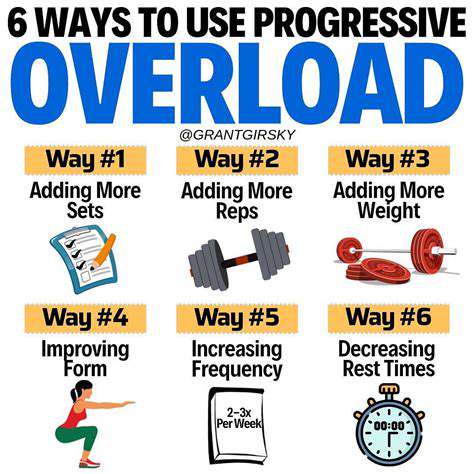


![How to Start Lifting Weights at the Gym [Beginner Guide]](/static/images/26/2025-05/SettingRealisticGoalsandExpectations.jpg)
